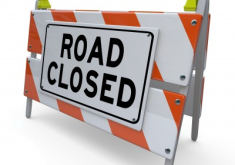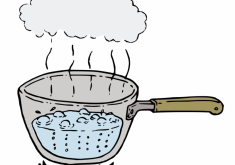
Hurricanes can shatter lives and damage property. Being prepared can help you, your family or your business minimize the impact of the storm.
Don't wait until a hurricane watch is issued, because it may already be too late to take certain precautions. Reduce property damage and get through any hurricane emergency with less stress by preparing before the season begins.
1. Plan your evacuation route well ahead of time
If you live on the coast or in a mobile home, you may have to evacuate in the event of a major storm. It's wise to create your evacuation plan well before a disaster strikes. This way, you can know ahead of time about the nearest shelters, take your pets into account in your plan, make sure to take important papers and make a trial run.
2. Keep non-perishable emergency supplies on hand
When a hurricane warning is issued, people run for the stores. As much as possible, get ahead of the rush having the following on hand:
- Extra batteries
- Candles or lamps with fuel
- Matches (keep these dry)
- Materials and tools for emergency home repairs–such as heavy plastic sheeting, plywood, a hammer, etc.
- Prescription drugs
- A three-day supply of drinking water
- Food that you don’t have to refrigerate or cook
- First aid supplies
- A portable NOAA weather radio
- A wrench and other basic tools
- A flashlight
If you need to evacuate, you'll bring these supplies with you. As expirations dates approach (for example, food or batteries), use the items and replenish your emergency stash.
3. Take an inventory of your personal property
Creating a home inventory will help ensure that you have purchased enough insurance to replace your personal possessions. It can also speed the claims process, substantiate losses for income tax purposes and is helpful should you need to apply for disaster aid. In the event you need to evacuate, be sure your home inventory is among the important documents you take with you.
4. Review your insurance policies
This hurricane season insurance checklist can help you to understand your coverage and whether it’s adequate to repair or rebuild your home, if necessary, and to replace your belongings Keep in mind that your homeowners insurance covers the cost of temporary repairs for hurricane damage, as well as reasonable additional living expenses (ALE) over and above your normal living expenses if you have to relocate (such as the extra expense of getting to work or to school if your temporary home is in a different community). However, your homeowners policy doesn’t cover flood damage, so you may want to consider looking into flood insurance. If you live by the coast, you may also need a separate policy for protection against wind and wind-blown water damage. If you have questions about what your current policy will cover or need to augment your current coverage, contact your insurance professional.
5. Take steps to protect your home
Hurricane force winds can turn landscaping materials into missiles that can break windows and doors and much of the property damage associated with hurricanes occurs after the windstorm when rain enters structures through broken windows, doors and openings in the roof. While retrofitting your home to protect against these possibilities is undoubtedly an expense, you can do it in stages.
- Replace gravel or rock landscaping materials with shredded bark, which is lighter and won't cause as much harm.
- Cut weak branches and trees that could fall on your house and keep shrubbery trimmed.
- Install storm shutters to protect your windows from breakage. Alternately, fit plywood panels to your windows, which can be nailed to window frames when a storm approaches.
- Make sure exterior doors are hurricane proof and have at least three hinges and a dead bolt lock that is at least one-inch long.
- Sliding glass doors should be made of tempered glass and, during a storm, covered with shutters or plywood. These types of doors are more vulnerable to wind damage than most other doors.
- Replace old garage doors and tracks with a door that is approved for both wind pressure and impact protection. Wind coming into your home through an opening this large poses grave problems for the rest of your home—especially your roof.
- Seal outside wall openings such as vents, outdoor electrical outlets, garden hose bibs and locations where cables or pipes go through the wall. Use a high quality urethane-based caulk to prevent water penetration.
- If you live in a mobile home make sure you know how to secure it against high winds and be sure to review your mobile home insurance policy.
- If you have a boat on a trailer, know how to anchor the trailer to the ground or house—and review your boat insurance policy.
6. Take steps to protect your business
Hurricanes take a toll on businesses, too so be prepared.
- Create an emergency business response and continuity plan. In the event of a hurricane this will help your business quickly recover.
- Keep contact information for employees, suppliers and vendors current so you can check on their wellbeing and communicate next steps for resuming normal business operations.
- Review your business insurance policies in order to understand what's covered.
For more preparedness tips, handy checklists (including ones you can personalize yourself) and evacuation planning advice to cover a variety of disasters.


